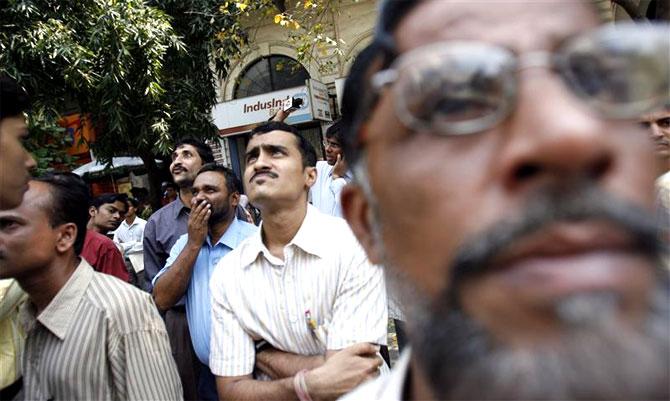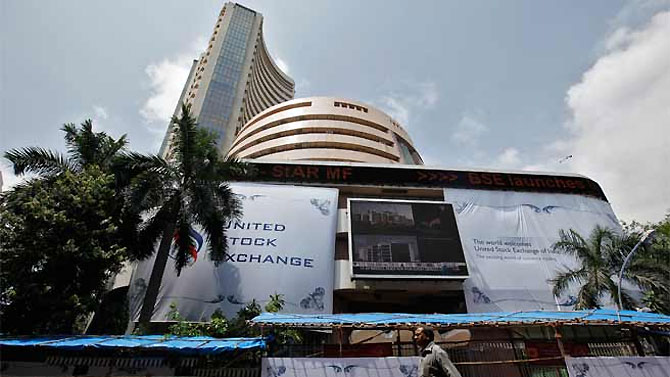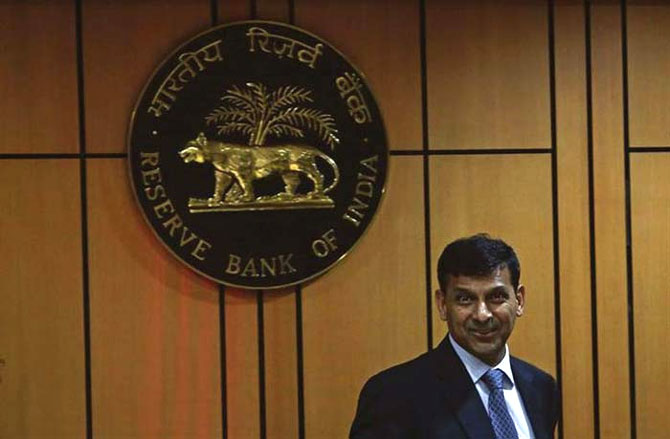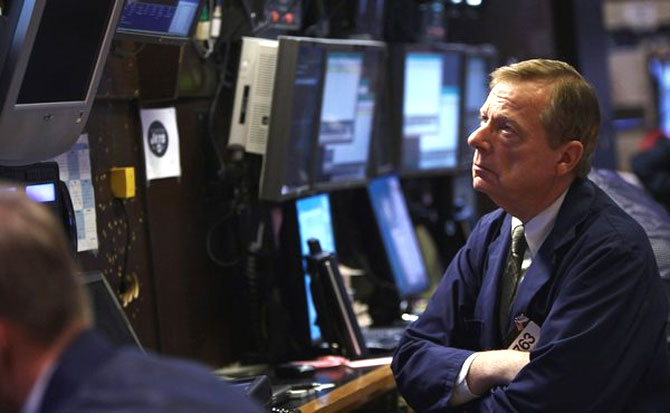Photographs: Reuters Devangshu Datta in New Delhi
One man, and one without a fiscal policy mandate at that, cannot reverse that trend.
While watching the market’s reaction to Dr Raghuram Rajan’s inaugural speech, I was struck by an insight so stunningly obvious few people will bother to state it. The new governor bears no resemblance whatsoever to Hogwart’s Headmaster, Albus Dumbledore.
Rajan is undoubtedly a very smart man. He is youthful by the standards of the Indian policy establishment. He is energetic and he has fresh ideas. But he doesn’t possess a wand, which can be waved to magically restore the fiscal balance. In fact, that isn’t even his job. The best he can offer is some degree of monetary sanity.
It took three years of collective fiscal profligacy and policy mismanagement to cause this crisis. Most of the people responsible are still very much part of the establishment. One man, and one without a fiscal policy mandate at that, cannot reverse that trend.
It will require a combined effort from fiscal policy-makers, with the consensus of Parliament to even start putting things right and the damage cannot be mended in a day, or a month, or maybe even a year.
Click on NEXT for more...
Rajan is doing his bit, will the politicians follow?
Photographs: Reuters
Nevertheless, there may be a continuation of the Rajan-rally. The financial index, the Bank Nifty saw a whopping 12.5 per cent rise in two sessions. His commitment to boosting reserves, to developing a coherent, consistent monetary policy and not taking arbitrary knee-jerk measures to cut liquidity, have been well-received and deservedly so.
Rajan is taking an interesting bet by encouraging banks to raise money abroad by hiking overseas exposure limits to 100 per cent of unimpaired Tier-1 capital. This could in theory, bring anything up to an extra $30 billion into the Reserve Bank of India (RBI)’s kitty.
The central bank will accept a large share of the exchange risk by fixing a swap rate of 3.5 per cent on such inflows, with a three-year time frame, and also allowing banks to hedge forex exposures at a 1 per cent discount to normal forwards. In effect, Rajan is hoping the rupee settles down within three years.
If the rupee trends up by 2016-17, the RBI makes a profit. Otherwise, the RBI will fatten reserves now and pay the costs later, to ensure there isn’t a liquidity crisis.
Click on NEXT for more...
Rajan is doing his bit, will the politicians follow?
Photographs: Reuters
Given that the government has also worked out expanded swap lines with Japan, and is seeking larger rupee-denominated oil deals with Iran, there is now considerably less anxiety on the currency front.
India should be able to finance the current account deficit (CAD) with something, if not much, to spare. Japan, standing by as a potential lender of last resort, is far less politically damaging in the Indian context than acceding to an International Monetary Fund programme.
This should stabilise the dollar/rupee rate. That doesn’t mean the rupee will not fall further. But it does mean that further depreciation, if any, is less likely to be jerky and uncontrolled and there will not be a run on the rupee.
As several other Business Standard columnists have pointed out, rupee depreciation must be integral to any strategy for a reduction of the CAD.
Despite his awesome debut, Rajan will not get too many Facebook likes when the RBI raises policy rates as it will be forced to do. US bond yields have doubled in the past three or four months in anticipation of the imminent tapering of quantitative easing 3.
The Fed may taper this month, or it may hold off. Delay seems likely since the latest US employment data is weak. But there will be a taper by end-2013 latest.
Click on NEXT for more...
Rajan is doing his bit, will the politicians follow?
Photographs: Reuters
Rupee rates must be raised to maintain a differential between dollar and rupee yields. Higher rates fit with Rajan’s views on inflation anyway. But the market will not like it. In fact, the market will not like it if he doesn’t cut rates on September 20 and he almost certainly won't.
The next major worry could be a sovereign rating downgrade. Given that national finances have definitely got more stressed since the agencies first threatened downgrades in 2012, this is not unlikely.
It would of course, lead to some outflows if there were sovereign downgrades. It would also make inflows difficult.
In other global events, if Obama does bomb Syria, crude prices will rise. This would have a negative impact of course. But it may trigger a more substantial hike in diesel retail prices.
That would be well-received, with speculative investments coming into the oil and gas public sector undertakings. The Reliance gas-pricing imbroglio will also have an impact obviously.
Click on NEXT for more...
Rajan is doing his bit, will the politicians follow?
Photographs: Carlo Allegri/Reuters
Meanwhile, Europe may be gradually pulling out of recession with marginally encouraging German numbers. Chinese data seems mixed but overall positive, if the purchasing managers index is to believed. Markets haven’t really endorsed the data yet.
Technically speaking, the Indian market could rally a fairly long way. There seems to be a base of support at 5,200-5,300, where it has bounced three times in the recent past. Trading volumes have increased — usually a positive signal. The FIIs have been net buyers in September.
A postponement of taper will see them buying more. If participants take a cue from the positive move of the Bank Nifty, a run-up to the 6000 Nifty level is possible. It is a different matter that such a rally may be irrational and unsustainable.
Here are the negatives. Earnings might stagnate through 2013-14. Interest rates will rise. Gross domestic product growth will not see a recovery. Starting November, with five state assembly elections, there will be increasing political uncertainty. The US will taper, even if it doesn't bomb Syria.
Rajan’s appointment along with the Japan swap deal has allayed fears of a worst-case currency scenario. That’s about it on the positive side of the ledger. Now it’s really up to the politicians to start doing their job.







article